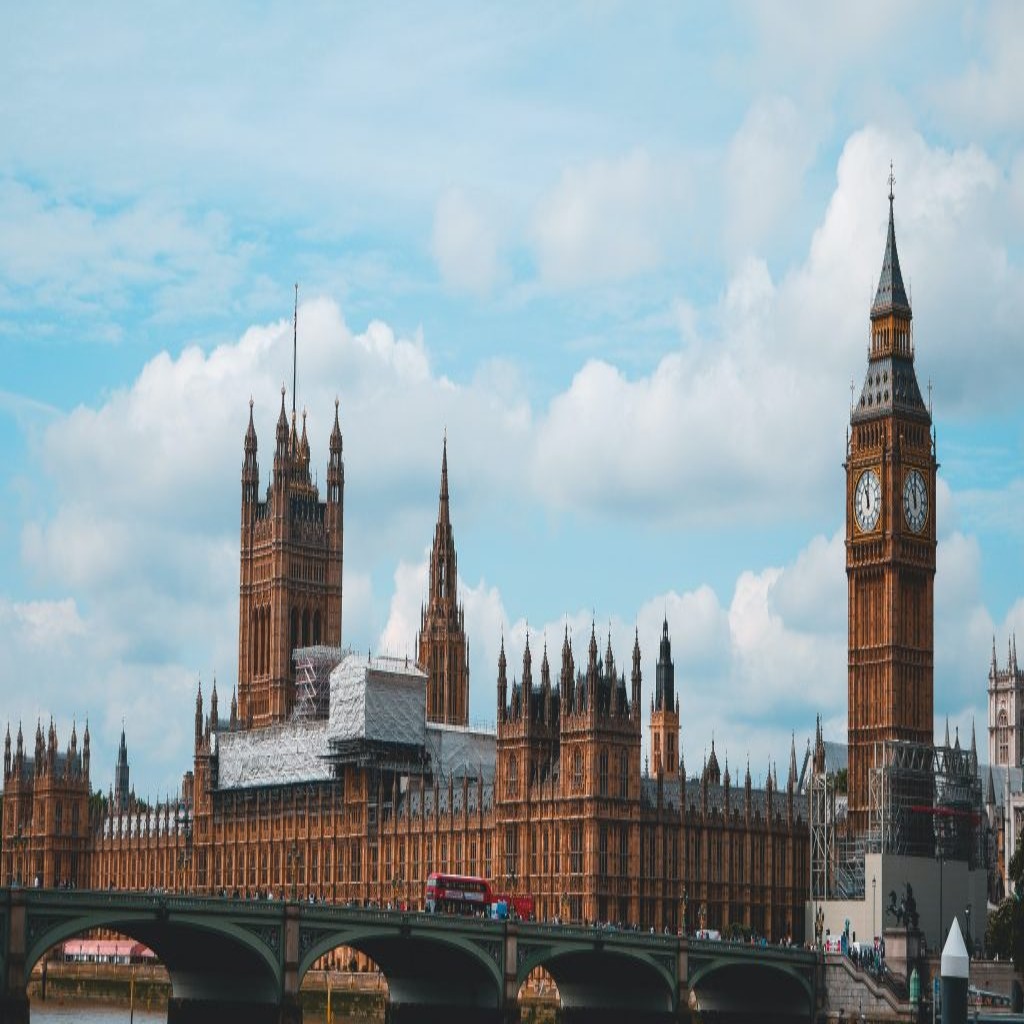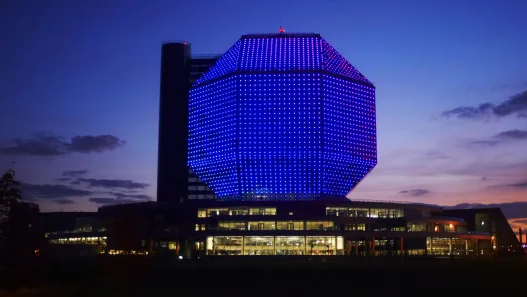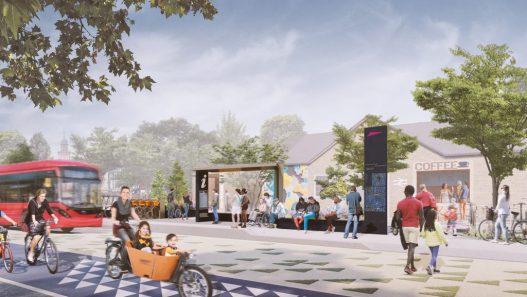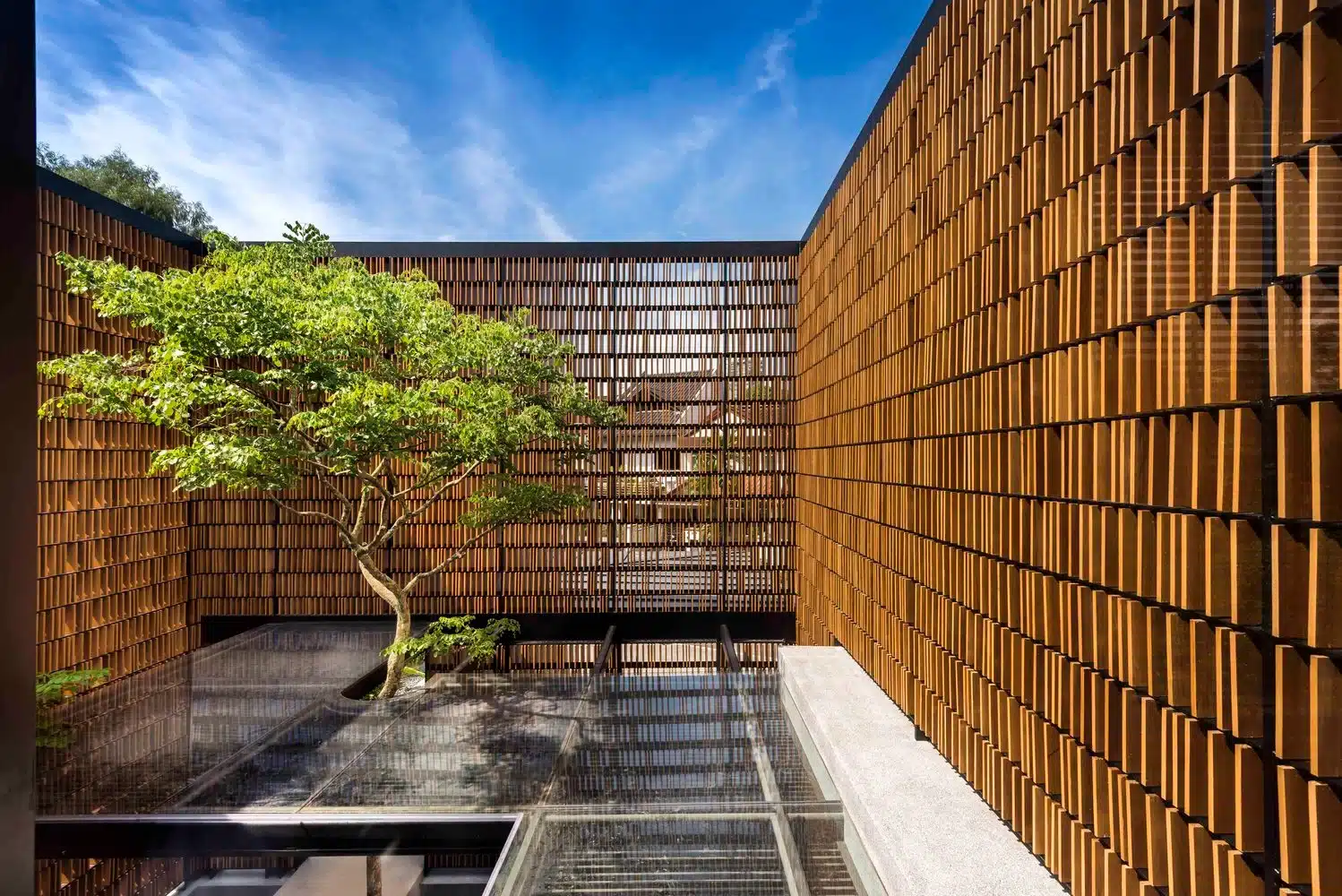Victorian Industrial Architecture emerged in the 19th century, a period marked by rapid industrialization and urban growth. This architectural style reflects the technological advances and social changes of the period, displaying a mix of functionality and aesthetic appeal. The buildings of this period were not just structures; they represented a new way of living and working, embodying the spirit of progress that characterized the Victorian era. As we explore this fascinating topic, we will discover its historical context, key features, its influence on modern architecture, important examples and an overview of the architectural styles that emerged during this vibrant period.

Historical Context
The Victorian era, which lasted until 1901, was a period of major transformations in Britain and beyond. The Industrial Revolution marked a shift from agricultural economies to industrial powerhouses, leading to the rise of factories, railways and urban centers. During this period, the population grew as people migrated to cities in search of work, creating a need for new types of buildings. Factories, warehouses and transportation hubs became necessary to support booming industries. The Victorian Industrial Architectural style responded to these needs by incorporating innovations such as iron and glass that allowed for larger, more open spaces and the creation of iconic structures such as train stations and exhibition halls.
Key Features
Victorian Industrial Architecture is characterized by the use of materials and structural innovations. One of its most striking features is the extensive use of iron and steel, which enabled the construction of sturdy yet elegant buildings. Large glass windows were also an integral part of this style, allowing natural light to enter the interiors, which was crucial for factories and warehouses. This style often includes decorative brickwork, intricate ironwork and bold, functional designs that reflect the industrial ethos of the period.
Another defining feature is the eclectic mix of styles. Architects drew inspiration from Gothic, Romanesque and even Renaissance styles, creating a unique aesthetic that combined the ornate and the utilitarian. The buildings were often large-scale and symbolized both the progress of industry and the aspirations of the society that built them. This interplay between functionality and decoration is one of the hallmarks of Victorian Industrial Architecture.
Influence on Modern Architecture
The legacy of Victorian Industrial Architecture is reflected in contemporary design. Many of the principles established during this period continue to shape modern architecture. The use of steel and glass as primary materials still underpins skyscrapers and public buildings today. Furthermore, the emphasis on function over form has inspired modern minimalist designs, where a building’s purpose often dictates its aesthetics.
In addition, the Victorian embrace of technology paved the way for innovations in building techniques that are still relevant today. The roots of concepts such as modular construction and prefabrication can be traced back to the industrial practices of this period. The blending of different architectural styles seen in Victorian buildings encourages today’s architects to explore eclectic designs, combining various influences to create unique and innovative spaces.
Notable Examples
Numerous buildings exemplify the grandeur and innovation of Victorian Industrial Architecture. The Crystal Palace, designed by Joseph Paxton for the Great Exhibition of 1851, is perhaps the most iconic. Constructed predominantly of glass and iron, it offered a striking visual experience and showcased the possibilities of industrial materials. Another notable example is the Gare de Lyon train station in Paris, which features a large clock tower and ornate details reflecting the spirit of the period.
The Natural History Museum in London, designed by Alfred Waterhouse, combines elements of Gothic revival with industrial materials, reflecting the period’s fascination with both science and aesthetics. Similarly, Tate Modern, housed in a former power station, highlights the adaptive reuse of industrial buildings, showing how Victorian architecture continues to influence contemporary design.
Overview of Architectural Styles
Victorian Industrial Architecture is part of a wider tapestry of architectural styles that developed during the Victorian era. This period witnessed the rise of the Gothic Revival, which emphasized pointed arches and intricate details, reflecting a romanticized view of the past. Alongside this, the Italianate style emerged, characterized by its red brick facades and decorative cornices.
The Arts and Crafts movement also gained momentum during this period, encouraging handmade elements and a return to traditional craftsmanship as a reaction against industrialization. While these movements focused on different aspects of design, they often intersected with industrial architecture, leading to a rich diversity of styles and forms.
In sum, Victorian Industrial Architecture stands as a testament to a transformative period reflecting the intersection of industry, society and design. Its influence is felt in modern architecture, where echoes of the past continue to inspire new generations of architects and designers. Thanks to its historical significance, unique characteristics and lasting impact, this architectural style remains a fascinating subject for exploration and appreciation.
The Importance of Brick in Industrial Design
Brick has long held an important place in the world of architecture and industrial design. Its rich history and versatile properties make it an important material for creating structures that are not only functional but also aesthetically pleasing. Throughout the ages, architects and designers have utilized the unique qualities of brick to construct timeless buildings. This research on the importance of brick in industrial design examines its material properties, economic implications, structural advantages, historical usability and environmental considerations.
Material Properties of Brick
Brick is renowned for its durability and versatility and these characteristics have made it a basic material in construction. Composed mainly of clay, brick undergoes a firing process that transforms it into a solid building material. This process not only increases its strength, but also allows for a wide range of colors, textures and finishes. The thermal mass of brick helps regulate indoor temperatures, keeping spaces warmer in winter and cooler in summer. This natural insulation reduces the need for artificial heating and cooling, making brick an energy-efficient choice.
In addition, brick is fireproof, offering an added layer of safety in industrial applications. Its ability to withstand harsh weather conditions allows structures to maintain their integrity over time, making it an ideal choice for both residential and industrial buildings. With its rustic charm and endless design possibilities, brick’s aesthetic appeal allows architects to create visually striking facades that can complement a variety of architectural styles.
Economic Impacts
The economic aspects of using brick in industrial design are multifaceted. For a start, the cost of brick raw materials can be relatively low, especially in areas where clay is abundant. This makes brick an attractive option for budget-conscious projects. Furthermore, the longevity and low maintenance requirements of brick structures contribute to long-term savings. While upfront costs are comparable to other materials, the durability of brick means repairs and replacements are infrequent, ultimately reducing life cycle costs.
Furthermore, local production of bricks can stimulate regional economies by creating jobs in manufacturing and construction. This local sourcing reduces transportation costs and carbon footprints, making brick a sustainable economic option. As industries increasingly prioritize sustainability, brick’s potential for recycling and reuse further enhances its economic appeal and enables innovative applications in construction and design.
Structural Advantages
The structural advantages of brick are important in industrial design. Its natural compressive strength allows the construction of tall, sturdy structures that can withstand heavy loads. This makes brick an excellent choice for buildings such as warehouses and factories, where large open spaces are often needed. The modular nature of brick also aids design flexibility, allowing architects to create complex geometries and patterns.
What’s more, brick can be used in load-bearing walls, simplifying construction and reducing the need for additional structural support. This not only saves materials, but also maximizes the usable space within a building. The thickness of the brick walls contributes to improved sound insulation, an important consideration in industrial environments where noise control is paramount.
Historical Availability of Materials
The historical availability of materials has played a critical role in the widespread use of brick in construction. The availability of clay deposits in many parts of the world has allowed communities to adopt brick-making practices for centuries. From ancient civilizations making mud bricks for their homes to modern industries producing fired bricks, this material has been a constant part of human development.
The adaptability of brick to local conditions and resources has made it a universal building block. Where timber was scarce or stone was difficult to quarry, brick emerged as the go-to material. Its availability has shaped architectural styles and urban landscapes, influencing everything from Philadelphia’s brick row houses to London’s iconic warehouses.
Environmental Considerations
In recent years, environmental considerations have become a central focus in industrial design and brick is well aligned with sustainable practices. Although the production process is energy intensive, it can be made more efficient through the use of renewable energy sources. Furthermore, the longevity of brick structures contributes to sustainability as they require fewer resources for repair and replacement over time.
Recycling is another important aspect of brick’s environmental profile. Old bricks can be recovered and reused in new construction, reducing waste and minimizing the need for new materials. This circular approach not only reduces environmental impact, but also adds character to new buildings, as reclaimed bricks often carry a unique history.
In conclusion, the importance of brick in industrial design is based on its material properties, economic impact, structural advantages, historical usability and environmental considerations. Its unique blend of durability, aesthetic appeal and sustainability makes it an enduring choice for architects and designers aiming to create effective and lasting structures. As we continue to explore innovative design solutions, brick will undoubtedly remain a key player in shaping our built environment.
Notable Brick Building Examples
Brick construction has long been recognized for its durability, aesthetic appeal and versatility. Throughout history, brick has been a staple building material used in a variety of architectural styles across the globe. In the modern era, there are notable examples that show how brick can adapt to contemporary needs while honoring its rich heritage. Let’s look at some examples of buildings in the UK that showcase the beauty and functionality of brick architecture.
Tate Modern, London
Situated on the banks of the River Thames, Tate Modern is an extraordinary testament to the possibilities of brick construction. Originally a power station, this iconic building was converted into a contemporary art gallery in 2000. Tate Modern retains the original brick façade that gives it a unique character while blending seamlessly with the modern interior designed by architects Herzog & de Meuron. The building features a massive Turbine Hall, exemplifying how brick can be both robust and impressive.
Visitors marvel as light filters through the large windows, creating dynamic spaces for art exhibitions. The use of brick not only honors the site’s industrial past, but also promotes sustainable practices; the renovation of the building emphasized the reuse of materials, demonstrating how brick can be both environmentally friendly and architecturally significant.
The Victoria Warehouse, Manchester
The Victoria Warehouse in Manchester is a historic landmark reflecting the city’s industrial heritage. Built in the early 20th century, this former warehouse complex demonstrates the power of brick as a primary building material. Its distinctive red brick exterior and large, arched windows were designed to allow natural light to flood the interior while allowing goods to be stored.
Today, the Victoria Warehouse has been transformed into a vibrant event space, hosting everything from concerts to weddings. The adaptability of brick allows for a variety of configurations within the warehouse, demonstrating its flexibility in meeting modern needs. The building has become a cultural hub, proving that brick construction can be both practical and a canvas for creative endeavors.
Albert Dock, Liverpool
Liverpool’s Albert Dock is a striking example of a brick building that embodies the city’s maritime history. Completed in 1846, it is one of the world’s first fireproof warehouses, showcasing the innovative use of brick and iron. The distinctive use of bricks in the construction of the dock resulted in a visually striking and durable structure.
Today, Albert Dock is home to museums, galleries and restaurants and attracts millions of visitors each year. Preserving the original brickwork alongside modern renovations demonstrates how historic brick buildings can be revitalized while retaining their character. A reminder of Liverpool’s vibrant commercial past, the docks demonstrate the enduring legacy of brick in the urban landscape.
Battersea Power Station, London
Once a powerhouse that supplied London with electricity, Battersea Power Station is an iconic symbol of the city, renowned for its striking Art Deco style and impressive brickwork. Built between 1935 and 1935, this massive structure features a unique mix of bricks designed to withstand the rigorous demands of an industrial plant.
After ceasing operations in the 1980s, the power station underwent a significant redevelopment and was converted into a mixed-use development of residential, retail and office space. The retention of the original brick façade during this transformation is a testament to the historic significance of the building and the versatility of brick. Battersea Power Station is now a vibrant community hub, attracting people from across the city and demonstrating the role brick can play in modern urban development.
Museum of Science and Industry, Manchester
Housed in a former railway depot, the Museum of Science and Industry (MOSI) in Manchester celebrates the city’s contributions to science and technology. The building itself is an excellent example of Victorian brick construction, with heavy brick walls reflecting the industrial style of the period.
MOSI not only showcases technological advances, but also emphasizes the importance of preserving historic buildings. The museum’s restoration work has preserved the integrity of the original brickwork while integrating modern exhibitions and educational spaces. This mix of old and new shows how brick can act as a bridge between past and present, making it an important part of Manchester’s cultural narrative.
—
As we examine these important examples of brick construction, we see how this durable material is able to adapt to a variety of functions while maintaining its historical significance. Brick architecture not only enhances the aesthetic appeal of structures, but also stands as a testament to the creativity of builders and architects throughout history. Each of these buildings tells a story, connecting us to the past and inspiring future generations.
Architectural Techniques and Innovations
Architecture is a constantly evolving field that blends creativity with functionality. As societies grow and change, so do the methods and materials used in the construction of buildings. Innovations in architectural techniques not only enhance the aesthetic appeal of structures, but also improve their durability and functionality. Understanding these techniques gives insight into how architects and engineers approach design and construction in modern times.
Bricklaying Techniques
Bricklaying is one of the oldest construction methods and has evolved significantly over the years. Traditionally bricks were laid in simple patterns, but modern techniques have introduced a variety of styles and approaches that enhance both strength and beauty. One of the key techniques is the Flemish bond, which uses alternating headers and stretchers that create a visually appealing pattern while ensuring structural integrity.
Moreover, advances in mortar technology have transformed the bricklaying process. Modern mortars improve adhesion and flexibility, resulting in better performance under various environmental conditions. The use of laser-guided tools and digital technology to measure and align bricks has also improved precision, resulting in cleaner lines and a better overall aesthetic.
In real-world applications, these techniques can be seen in urban landscapes where brick buildings stand as testament to both craftsmanship and innovative engineering. Cities like Chicago and London showcase brickwork that not only tells the story of the past, but also incorporates modern techniques to provide durability and resilience against the elements.
Use of Decorative Brick
Decorative brickwork serves as a beautiful form of expression in architecture. Beyond its structural function, brick can be manipulated to create intricate designs and patterns that enhance the visual appeal of a building. Techniques such as cornicing, where bricks are stacked so that they hang down, can create shadow effects that add depth to facades.
In addition, the use of colored and textured bricks allows architects to play with light and shadow, enhancing the character of the building. Some buildings have elaborate brick motifs that reflect cultural heritage and tell the stories of the community through their design.
A prime example of this is the iconic brickwork seen in many of New York’s brownstone buildings, where decorative elements not only add to the overall beauty but also pay homage to historic architectural styles. These buildings demonstrate how decorative brickwork can blend art and construction and make urban environments more inviting and visually stimulating.
Structural Engineering Developments
Structural engineering is at the heart of modern architecture, ensuring that buildings are not only beautiful but also safe and functional. Recent advances in structural engineering have led to innovative materials such as high-strength concrete and steel composites that can withstand greater loads while being lighter than traditional materials.
One of the key advances is the use of computer-aided design (CAD) and building information modeling (BIM). These technologies allow engineers and architects to simulate how a structure will perform under various conditions, improving safety and efficiency in the design process.
Real-world applications of these advances can be seen in skyscrapers and bridges that push the limits of height and span. The Burj Khalifa in Dubai, for example, is based on a complex system of structural elements that have been rigorously designed and tested using advanced modeling techniques. These innovations not only redefine what is possible in architecture, but also reflect the ongoing quest to create structures that inspire and endure.
Integration with Other Materials
The integration of various materials has become one of the hallmarks of contemporary architecture, allowing for both innovative and functional designs. Combining traditional materials such as brick and stone with modern materials such as glass and metal creates a dynamic contrast that can enhance a building’s aesthetic appeal.
This approach also serves practical purposes. For example, using glass in combination with brick can maximize natural light while maintaining the thermal properties of the building. Architects often choose materials based on their environmental impact, durability and how they interact with each other.
Consider the work of architects like Frank Gehry, whose use of materials creates fluid forms that challenge traditional architectural boundaries. His designs often juxtapose rigid structures with softer, flowing forms, showing how the integration of different materials can lead to groundbreaking architectural expressions.
Adaptations for Functionality
Functionality is very important in architecture. As societal needs change, architects must adapt their designs to meet these demands. This may involve rethinking how spaces are used, such as designing flexible interiors that can serve multiple purposes or incorporating sustainable technologies that reduce energy consumption.
For example, the rise of remote working has influenced the design of residential spaces, encouraging architects to create home offices that blend seamlessly into living spaces without compromising comfort. In addition, many public buildings are now being designed with accessibility in mind, ensuring they cater to diverse populations.
Real-world examples of these adaptations can be seen in community centers that offer multifunctional spaces for meetings, workshops and leisure activities. Such designs not only encourage civic engagement, but also reflect a growing awareness of the need for versatile and inclusive environments.
Ultimately, architectural techniques and innovations are a testament to human creativity and adaptability. As we continue to explore new materials and methods, the built environment will evolve to reflect our changing needs and desires. By understanding these techniques, we appreciate the art and engineering that shape our world.
The Aesthetic Appeal of Brick
Brick has long been a favored material in architecture, not only for its practical benefits, but also for its undeniable beauty. When we think of brick, we often imagine warm, earthy tones that can evoke feelings of comfort and stability. The aesthetic appeal of brick lies in its versatility, allowing it to adapt to a variety of styles and contexts, while at the same time giving a unique character to each structure it adorns. This research explores the nuances of brick’s aesthetic qualities, from color and texture to its symbolic meanings in industrial architecture.
Variations in Color and Texture
One of the most fascinating aspects of brick is its extraordinary variety of colors and textures. From deep reds and soft browns to vibrant yellows and even blues, brick can dramatically change the visual impact of a building. These variations stem from the natural materials used to make bricks, such as clay and minerals, and the firing processes that transform them. This diversity allows architects and designers to choose bricks that complement their vision, whether they are aiming for a rustic farmhouse look or a sleek, modern facade.
Texture plays an equally important role in the aesthetic appeal of brick. Smooth bricks have a contemporary feel, while rough, handmade bricks can evoke a sense of history and craftsmanship. Architects often use these textures strategically to create depth and interest. For example, a building with a mix of smooth and textured bricks can achieve a dynamic surface that draws the eye and invites exploration.
Architectural Ornament
Beyond its intrinsic qualities, brick offers a canvas for creative ornamentation. Architects have long used decorative techniques such as cornices, arches and intricate patterns to beautify brick structures. These decorations not only add visual interest, but also serve to emphasize the craftsmanship used in bricklaying.
In many historical contexts, brick ornamentation was a way to indicate wealth and status. For example, in the late 19th century, buildings such as the Chicago School skyscrapers showcased elaborate brickwork used to express both durability and elegance. Today, contemporary architects continue to experiment with brick decoration, using modern technology to create innovative designs that push the boundaries of traditional brickwork.
Influence of Regional Styles
The aesthetics of brick are also deeply influenced by regional styles and local traditions. Different regions have their own historical uses of brick, shaped by climate, available materials and cultural preferences. In South America, for example, red brick is often associated with plantation houses and evokes a sense of heritage and nostalgia. In contrast, the brick buildings of Northern Europe may have lighter tones and more complex patterns, reflecting local architectural styles and climatic requirements.
This regionalism is not just a matter of aesthetics; it also signals the identity of a place. Buildings constructed from local brick often resonate with the community, telling the stories of the land and its people. When architects design with an awareness of these regional influences, they create buildings that honor local history while contributing to a cohesive architectural narrative.
Symbolism in Industrial Architecture
In industrial architecture, brick carries a unique symbolism. It is often associated with strength, reliability and permanence. Brick was used as the main material in many factories and warehouses built in the late 19th and early 20th centuries, embodying the spirit of progress and innovation of the industrial revolution. The robust nature of brick made it an ideal choice for structures that were intended to last even under harsh working conditions.
Furthermore, the use of brick in industrial buildings can also imply a connection to craftsmanship and workmanship. Since many of these structures were built by hand, the visible brickwork serves as a testament to the skill of the workers involved. Today, while many old factories are being converted into trendy lofts or commercial spaces, exposed brick walls often evoke a sense of nostalgia and remind us of the industrial heritage that shaped many cities.
Examples of Aesthetic Success
Examining specific case studies reveals the profound aesthetic impact that brick can have on architecture. Take the High Line in New York, where former industrial buildings have been transformed into vibrant public spaces. The juxtaposition of lush landscaping with solid brick facades creates a striking visual contrast that enriches both the natural and built environment.
Another noteworthy example is a residential development in Melbourne, Australia, designed by architecture firm OOF! This residential project uses a variety of brick types and colors to create a dynamic facade that reflects the surrounding neighborhood while maintaining a distinct identity. The careful integration of brick not only enhances the aesthetic appeal, but also ensures that the house fits seamlessly into its urban context.
Through these examples, we see that brick is not just a building material, but a tool through which architects can express their creativity, respect local traditions and make connections between past and present. The aesthetic appeal of brick continues to inspire architects and designers as they explore new possibilities in the ever-evolving world of architecture.
Conservation and Adaptation of Brick Buildings
Brick buildings have a special place in the history of architecture and represent not only a building material, but also a testament to human creativity and cultural expression. Their durability and aesthetic appeal have allowed many brick buildings to stand the test of time and they often become treasured landmarks within communities. However, as cities evolve, the preservation and adaptation of these historic structures presents both challenges and opportunities. This research explores the complexities of preserving brick architecture while adapting it for modern use, ensuring that these historic treasures continue to thrive.
Challenges in Conservation
The preservation of brick structures is fraught with challenges arising from environmental factors, structural integrity and evolving building codes. One of the most significant issues is weathering. Over time, bricks can be damaged by erosion, moisture infiltration and freeze-thaw cycles, which can lead to cracks and structural damage. Furthermore, modern building standards often require upgrades to meet safety regulations, which can conflict with the original design and materials of historic buildings.
Furthermore, the financial aspect of preservation cannot be ignored. Restoration projects often require significant investments and securing financing can be a daunting task. Property owners may find it difficult to balance the costs of preservation against the potential returns, leading to their neglect or, in some cases, demolition. The challenge is not only to preserve the physical integrity of the buildings, but also to find ways to integrate them into contemporary urban life without compromising their historical significance.
Modern Uses of Historic Buildings
Despite obstacles, many brick buildings have found new life through innovative adaptations. Historic buildings are increasingly being repurposed for contemporary uses such as residential lofts, offices and cultural spaces. This transformation not only preserves the physical fabric of buildings, but also revitalizes neighborhoods, creating vibrant spaces that attract both residents and visitors.
For example, factories once awash with industrial activity can now serve as trendy art galleries or co-working spaces, blending the old with the new. The adaptive reuse of these buildings often emphasizes their historic features, such as exposed brick walls and original wooden beams, creating a unique aesthetic that appeals to modern sensibilities. This trend not only honors the past, but also breathes new life into communities, making them more dynamic and engaging.
Restoration Techniques
The restoration of brick structures requires a careful balance between preserving the original materials while applying modern techniques. One common approach is to use lime mortar, which is more flexible and breathable than modern cement-based mortars. This helps protect the bricks from moisture damage and allows the building to ‘breathe’, reducing the risk of rot.
In addition, the use of traditional craftsmanship techniques ensures that repairs preserve the character of the building. Skilled artisans can use hand tools and original methods to restore brick facades or recreate missing elements such as decorative cornices or window frames. The choice of restoration materials is critical; using locally sourced bricks that match the original in color and texture is essential to preserve historic authenticity.
In addition, technological advances such as 3D scanning and printing offer exciting possibilities for restoration. These techniques can help create precise replicas of deteriorated elements, ensuring that the restored building remains true to its original design while meeting modern standards.
Community Engagement and Awareness
Community involvement plays a vital role in the preservation of brick buildings. Local residents often have a deep emotional connection to these structures and see them as symbols of their cultural heritage. Community-led initiatives, such as preservation associations or local history groups, can effectively raise awareness of the importance of preserving these buildings.
Public involvement can take many forms, from volunteering for restoration projects to attending educational workshops about historic preservation. Highlighting the stories behind brick buildings leads to a greater appreciation of their significance and encourages communities to advocate for their preservation. This grassroots involvement can lead to successful partnerships with local governments and organizations and secure the necessary funding and resources for conservation efforts.
The Future of Brick in Urban Development
As urban areas continue to grow and develop, the future of brick structures looks promising. The trend towards sustainable architecture is in line with the enduring qualities of brick. Its thermal mass properties contribute to energy efficiency, making it an ideal material for modern construction practices that prioritize sustainability.
Innovative design approaches are emerging that blend new construction with existing brick structures. Architects are increasingly incorporating brick into contemporary designs, creating harmonious environments that respect the historic context while embracing modern aesthetics. This integration not only preserves the past, but also sets a precedent for future urban development that values history as a vital component of community identity.
In conclusion, the preservation and adaptation of brick buildings presents both challenges and opportunities. By creatively integrating them into contemporary life while respecting their historical significance, we can ensure that these architectural treasures will continue to resonate with future generations. The journey of brick architecture is far from over; it is an ongoing story of resilience, innovation and community spirit.

















